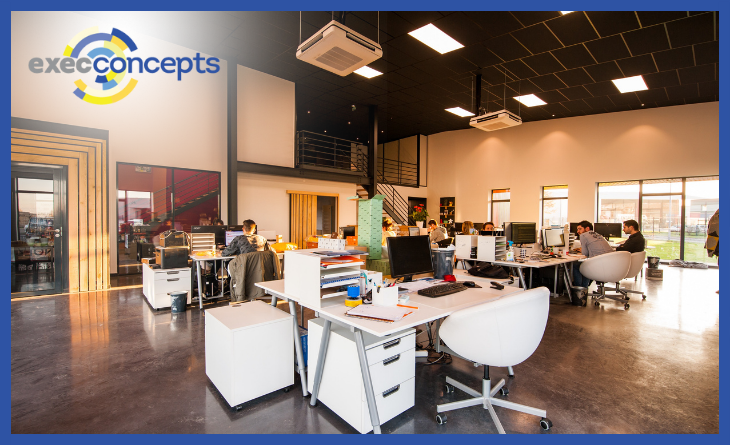Tech Isn’t Just Transforming The Workplace — It Is The Workplace

In days gone by, tech has been seen primarily as a support tool for employees to help them get their jobs done. Nowadays, it has taken center stage -- and the need to figure out how to keep everything working as intended is essential. With technology rewriting the rules around the workplace, dedicated efforts will be needed to ensure both employee experience and performance.
In the past, tech was seen more as a support tool for employees to help them get their jobs done. Fast-forward to spring 2021, and tech has taken center stage. In the hybrid workplace, it’s now being used for virtually everything — from meetings to operations to company updates.
In fact, tech is now seen as the driving force behind a company’s ability to create an effective working environment for employees while still being responsive enough to allow for personal interaction. With the hybrid workplace now firmly entrenched, opportunities for social interaction have never been more important (or overlooked) — both for employees and the company overall.
When Tech Takes Over
Think about the average employee’s day-to-day activities and interactions. Tech is being used company-wide in a multitude of ways by everyone — from the front desk all the way to the C-suite.
For many organizations, communication happens daily through collaboration tools like Microsoft Teams. Employees are now receiving training and career development through webinars or CMS platforms. Leadership teams depend on large-scale video broadcasts to communicate with their employees and deliver company updates. Even those companies easing back into the office or rolling out a hybrid work plan may be using conference room management software to help with social distancing by limiting the number of participants. Technology has truly taken over.
In 2021, technology is what’s making it possible for individuals and groups to work together from a distance. Platforms and applications are no longer playing a supporting role; these tools are now business-critical for operations. Leaders not only need to assess the right strategies and tools to continue growing the business — they need to figure out how to keep everything working as intended.

Performance (Really) Matters
With technology being the driver behind overall productivity, companies need to pay closer attention to the network that powers it all. If your corporate network experiences issues or starts to fail, the whole operation may suffer because technology is no longer just a component of the business — it is the business.
In the past, for example, poor video experience might have been acceptable with the possibility of a follow-up face-to-face meeting. Now, video meetings are often the closest thing we have to social interaction. Reliable network performance and smooth video streaming mean that employees at least have the basic tools to interact and collaborate.
As video becomes the main form of communication for many, video analytics can provide a comprehensive look into network performance and activity. Analytics is a powerful tool for leaders to better understand their workforce and the demands of a hybrid workplace.
More reliance on video means greater stress on the network, and this does not only affect the video experience. Network congestion due to higher video traffic can also cause issues in other business-critical applications. Leaders need to constantly be aware of network performance and proactively find ways to achieve greater stability and quality of experience.
Don’t Forget Employee Experience
But technology isn’t just enabling employees to work; it fuels the overall employee experience. Work-life is now mostly, if not completely, experienced through technology. This technology-centric work environment has been seen to increase productivity but lacks the same social interaction and relationship-building opportunities that were an inherent part of a physical workplace.
It’s on us as leaders to figure out how to best support our employees in this new norm. We need to understand how we can (1) encourage social interaction, (2) promote social intelligence and (3) create the need for relationship building when there are no obvious social demands or opportunities to do so. Leaders need to take steps to ensure that social bonds can be cultivated and developed naturally through technology.
Promoting social intelligence among employees doesn’t just empower them — it also contributes to stronger team bonding and better productivity. In the absence of physical meetings, employees must heighten their awareness of how they carry themselves on video as well as be proactively monitoring how their peers are reacting (or not reacting).
Any time your employees are virtually meeting with someone, they need to watch for and be able to correctly interpret important social cues such as facial expressions, body language and tone of voice. If social intelligence hasn’t been considered as part of your employee engagement plan, you need to get serious about it now. Provide mentoring, guidance or support as needed. Trust me, your employees — and ultimately your customers — will thank you.
The simple truth is that as technology is rewriting the rules around the workplace, dedicated efforts will be needed to ensure that employee experience is not overlooked. A team’s ultimate success is still going to be measured by its output, and the most successful teams are those that are built around strong relationships.
If you want your business to remain competitive, you need to get your tech straight. We can show you how your systems will improve and how you'll save time and money in the long term. Contact our experts at our Facebook page and schedule an appointment at (877) 472-7727 to learn how we can help.
